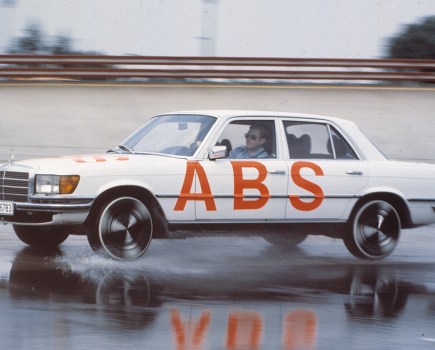On a carburettor-fuelled engine, the fuel pump has two functions. The first is to draw fuel up and along from the tank to the engine. The second is to maintain sufficient fuel pressure in the pipe between the pump and the carburettor for the carburettor to be able to draw the fuel it needs to operate. Beyond this – and obviously not generating more pressure than the pipework can withstand – the pump has no fuel ‘metering’ function. That’s handled within the carburettor by the float-operated needle valve and all the pump has to do is ensure there’s sufficient pressure (i.e. fuel) within the pipe to meet the carburettor’s needs under all conditions.
Classic fuel pumps come in two basic types – electrical and mechanical. Electric pumps (made by SU carburettors for example) are generally found on Morris/BMC/BL products, plus one or two others that SU were prepared to supply – for example Rolls-Royce and pre-BL Rover; we’ll look in detail at electric pumps in a later issue. Most other British marques used mechanical pumps, mounted on and driven directly off, the engine, usually by means of an arm pushed up and down by a dedicated lobe on the camshaft. The arm tends to be vehicle (or at least engine-block type) specific; but the pumps themselves tend to be more universal.
The pump consists of three moving parts – a rubber diaphragm, plus two valves. The diaphragm, driven off the pump’s operating lever, provides the pump’s main ‘sucking and blowing’ action; on the downward stroke, fuel is sucked into the pump, and on the upward stroke it’s pushed out. Then, to ensure it comes in and goes out through the inlet and outlet pipes, there’s a non-return valve in each – the valve in the inlet valve is sucked open on the downward stroke, whereas the one in the outlet is sucked closed. Then, on the upward stroke, the inlet valve is pushed closed and the outlet pushed open, allowing the fuel to exit via the outlet pipe. The two valves are normally identical, but installed the opposite way round so that they operate when required.
Up to the late ‘Sixties most AC pumps were designed to be dismantled and rebuilt/refurbished, after that some were sold as complete sealed units. When a unit needs rebuilding it’s usual to renew the diaphragm and both rubbers, plus the sealing rings/gaskets around the joins in the body. Routine servicing – again where possible – comprises removing the single bolt holding the top on and cleaning the gauze filter underneath.
A leaking diaphragm can actually be dangerous since any fuel that gets past it will drain down through the engine into the oil sump where there’s a real danger that, if enough fuel gets in there, heat will cause it to vaporise and possibly ignite, leading to an explosion within the engine. Fortunately this is rare since the leak will normally cause the pump (and thus the car) to stop working before more than a small amount of fuel gets in there. It is though one to watch if poor performance – especially at higher revs – is accompanied by high fuel consumption and an apparent increase in oil level.






